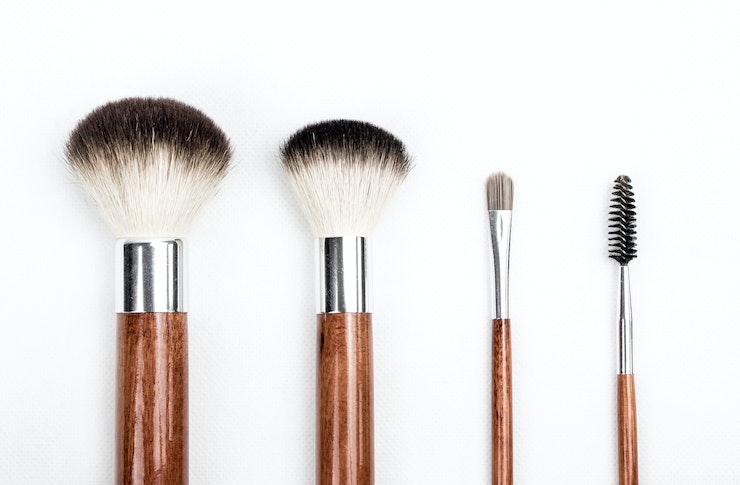Camera-ready tips for video calls and virtual events
Looking polished on video is a combination of good lighting, texture-friendly cosmetics, and efficient application techniques. This short guide highlights practical beauty and skincare steps, simple brush and tool choices, and on-camera color strategies to help you achieve a consistent, camera-ready look for virtual events and video calls.

Looking polished on camera is both practical and achievable with a few focused adjustments to your cosmetics and routine. For video calls and virtual events, prioritize skincare that creates a smooth canvas, choose primer and foundation formulas that suit your lighting, and use application and blending techniques that read well on screen. Small changes to contouring, eyeshadow, and lipcolor choices — paired with the right brushes and tools — can reduce shine, enhance features, and keep your look longwear and resilient under different streaming conditions.
How does skincare affect camera-ready makeup?
Good skincare sets the stage for any cosmetics application. Clean, hydrated skin helps primer and foundation sit evenly and prevents patchy texture that shows on high-definition video. Incorporate a gentle cleanser, lightweight moisturizer, and targeted products for dryness or oiliness so makeup applies smoothly. Exfoliation once or twice weekly can improve surface texture, while a simple hydrating serum before primer can keep foundation from settling into fine lines. Proper skincare reduces the need for heavy layering of products, helping your camera-ready finish look natural yet polished.
Which primer and foundation work for cameras?
Choose a primer that addresses your skin’s needs: mattifying primers help oily complexions reduce shine under bright lighting, while hydrating primers offer a dewy base without excess reflectivity. For foundation, select a formula with medium buildable coverage that blends easily and photographs well; foundations labeled natural or satin finish often render most accurately on camera. Test products with your webcam in your usual lighting to confirm undertone match and finish. Avoid SPF-heavy or glittery foundations that can reflect light or create a white cast on camera.
How to use color correction and contouring on video?
Color correction and subtle contouring create dimension that cameras can flatten. Use colorcorrection products sparingly: a peach or orange corrector can neutralize under-eye darkness, while green correctors target redness. Apply thin layers and blend thoroughly before foundation. Contouring should be soft and diffuse—avoid harsh lines; use a matte contour shade one to two shades darker than your skin tone and blend with circular motions. On-screen, gentle sculpting along the cheekbones and jawline enhances facial structure without looking heavy when you’re on video.
What are blending and brush techniques for eyelids and face?
Blending is key for a natural camera-ready application. Use clean brushes and tools: a dense foundation brush or sponge ensures even application, while tapered face brushes provide controlled blending for contour and highlight. For eyeshadow, start with a neutral transition shade and build intensity gradually; blending with a fluffy brush softens edges so color reads smoothly on-screen. Keep products layered thinly rather than packed on; this preserves movement and prevents creasing. Regularly clean brushes and sponges to avoid texture buildup that can affect finish.
How to choose eyeshadow and lipcolor for screens?
Select eyeshadow shades that enhance your eye color without overwhelming the frame—matte and satin finishes are often more flattering than high-shine pigments for extended video. Define the lash line with a soft liner to open the eyes; avoid heavy, blocky lines that can look severe on small screens. For lipcolor, opt for formulas that balance pigment and comfort: creamy longwear stains or satin lipsticks often translate well on camera without excessive transfer. Avoid extremely glossy or ultra-matte finishes that may either reflect light or emphasize dryness.
What longwear tips and tools keep makeup intact?
Set key areas lightly with translucent powder to reduce midday shine, and use a misting setting spray to lock in layers for longwear performance. Keep blotting tissues and a compact powder nearby for quick touch-ups during back-to-back calls. Tools like angled brushes aid precise brow and liner work, while a small fluff brush is ideal for evening out edges quickly. Test your full routine in the same lighting and angle as your typical calls—this rehearsal reveals where touch-ups or product swaps may be necessary to maintain a consistent cameraready appearance.
Concluding thoughts: Preparing a camera-ready look requires attention to skincare, thoughtful selection of foundation and primer, skillful colorcorrection and contouring, and careful blending with the right brushes and tools. By favoring medium coverage, soft sculpting, and longwear techniques, you can achieve a polished appearance that reads well on screen without heavy-handed application. Focus on products and methods that complement your natural features and the specific lighting conditions you encounter in your virtual events and video calls.





